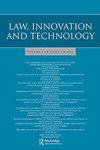代码契约?
Q1 Social Sciences
引用次数: 1
摘要
摘要用自然语言写成的合同描述了双方的权利和义务。然而,它不能“做”任何事情。它产生的是法律效果,而不是物理效果。传统的合同不指示计算机执行任何操作。用代码表示的合同可以。问题来了:我们能否将合同文件从证明协议的被动实施例转换为包含计算机指令的主动文件?保证合同按约定履行的能力,这是“智能合同”的一个基本理念,取决于在代码中表达义务的能力,或者更具体地说,取决于代码完全按约定履行义务的能力。然而,并不是每一项义务都可以编码——无论是由于其本身的性质,还是由于编程语言的有限表达能力。本文强调了形式和实质之间的相互作用,提出了在代码中表达合同所涉及的复杂性。在考虑“智能合约”的技术方面之前,我们必须面对一些初步问题:我们试图编码什么——以及目的是什么?整个合同可以用代码表示吗?我们应该专注于将法律散文翻译成代码,还是专注于为履行义务的特定任务编码?这篇论文为“智能合约”领域更雄心勃勃的项目奠定了基础本文章由计算机程序翻译,如有差异,请以英文原文为准。
Contracts in code?
ABSTRACT A contract written in natural language describes the parties’ rights and obligations. It cannot, however, ‘do’ anything. It produces legal not physical effects. Traditional contracts do not instruct computers to perform any operations. Contracts expressed in code could. The question arises: can we convert contractual documents from being passive embodiments evidencing agreements into active files containing computer instructions? The ability to guarantee that contracts are performed as agreed, an idea underlying ‘smart contracts,’ depends on the ability to express obligations in code or, more specifically, on the ability of code to express obligations exactly as agreed. Not every obligation can, however, be encoded - be it due to its very nature or to the limited expressiveness of programming languages. Highlighting the interplay between form and substance, this paper presents the complexities involved in expressing contracts in code. Before contemplating the technical aspects of ‘smart contracts’ we must confront some preliminary questions: what are we trying to encode – and for what purpose? Can the entire contract be expressed in code? Should we focus on translating legal prose into code or on encoding specific tasks that serve to discharge obligations? This paper provides the groundwork for more ambitious projects in the area of ‘smart contracts.’
求助全文
通过发布文献求助,成功后即可免费获取论文全文。
去求助
来源期刊

Law, Innovation and Technology
Social Sciences-Law
CiteScore
4.50
自引率
0.00%
发文量
18
期刊介绍:
Stem cell research, cloning, GMOs ... How do regulations affect such emerging technologies? What impact do new technologies have on law? And can we rely on technology itself as a regulatory tool? The meeting of law and technology is rapidly becoming an increasingly significant (and controversial) topic. Law, Innovation and Technology is, however, the only journal to engage fully with it, setting an innovative and distinctive agenda for lawyers, ethicists and policy makers. Spanning ICTs, biotechnologies, nanotechnologies, neurotechnologies, robotics and AI, it offers a unique forum for the highest level of reflection on this essential area.
 求助内容:
求助内容: 应助结果提醒方式:
应助结果提醒方式:


